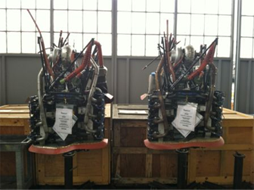 After flying for a few weeks, it is time for me to rotate flying with the other intern. So for the next few weeks I will be ‘flying a desk’ and my last week will be spent back in the skies. I’m working in the Flight Department offices regarding pilot training, records, manuals, regulatory compliance, and recruiting. It’s great to see the behind-the-scenes work that goes into running an airline that most pilots don’t get a chance to see.
After flying for a few weeks, it is time for me to rotate flying with the other intern. So for the next few weeks I will be ‘flying a desk’ and my last week will be spent back in the skies. I’m working in the Flight Department offices regarding pilot training, records, manuals, regulatory compliance, and recruiting. It’s great to see the behind-the-scenes work that goes into running an airline that most pilots don’t get a chance to see.
Ameriflight operates as an ‘on demand air carrier’ regulated by Title 14 of the Code of Federal Regulations part 135 (14 CFR Part 135). The FAA is the enforcing agent for these regulations and since they control an airline’s ability to operate, it is important as a company to follow all their guidelines. In regards to training, this includes properly training and checking all company pilots to ensure compliance, standardization, and safe practices. Confidential records are kept on each pilot as proof that this is all true.
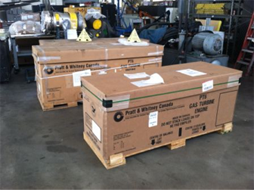 As an intern I assist in developing and producing training materials for our pilots via manuals, supplements, and computer-based modules. I also perform audits on our records as part of regulatory compliance.
As an intern I assist in developing and producing training materials for our pilots via manuals, supplements, and computer-based modules. I also perform audits on our records as part of regulatory compliance.
You may have read about the projected pilot shortage in news headlines. To add to that, our company is hiring, which is good news for many young aviators like myself. For reasons like the projected shortage, now is a great time to get started on your career!
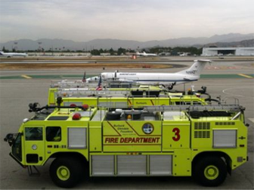 Our offices are adjacent to the hangar, which allows me to see our mechanics in action. Attached below are some photos of Pratt & Whitney PT6A turbine engines in the box and Lycoming TIO-540 piston engines on mounts. In addition to powerplants we do much of our maintenance work in-house. The last photo is a line-up of ARFF (Airport Rescue and Fire Fighting) vehicles that came by for a visit.
Our offices are adjacent to the hangar, which allows me to see our mechanics in action. Attached below are some photos of Pratt & Whitney PT6A turbine engines in the box and Lycoming TIO-540 piston engines on mounts. In addition to powerplants we do much of our maintenance work in-house. The last photo is a line-up of ARFF (Airport Rescue and Fire Fighting) vehicles that came by for a visit.
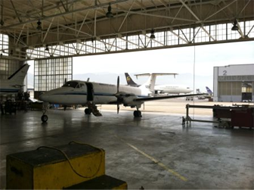
Over and Out.


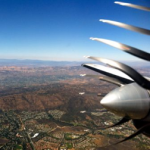 Flying in Southern California is a nice change from the norm of Central Florida.
Flying in Southern California is a nice change from the norm of Central Florida.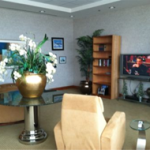 Flying the Beech 1900 is just like flying a big King Air, in fact Beechcraft even refers to the aircraft as a grown-up King Air in the manuals. It was originally developed to be a business aircraft but the airlines loved it so much that it became one of the most popular turboprops of its time. In a passenger configuration it seats 19 people, and in a cargo configuration we can typically carry 5,500 lbs.
Flying the Beech 1900 is just like flying a big King Air, in fact Beechcraft even refers to the aircraft as a grown-up King Air in the manuals. It was originally developed to be a business aircraft but the airlines loved it so much that it became one of the most popular turboprops of its time. In a passenger configuration it seats 19 people, and in a cargo configuration we can typically carry 5,500 lbs.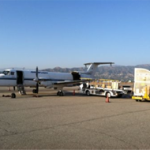 As the regional-jet market expanded, many carriers got rid of their 1900s to adapt to their changing mission. Despite this, it is a very capable aircraft and valuable to cargo airlines for its bulk capability, climb performance, cruise speed, and versatility.
As the regional-jet market expanded, many carriers got rid of their 1900s to adapt to their changing mission. Despite this, it is a very capable aircraft and valuable to cargo airlines for its bulk capability, climb performance, cruise speed, and versatility.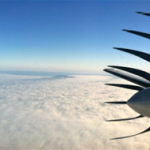 more hazardous materials legally. Hazardous materials include items like dry ice, batteries, medical specimens, and low-TI radioactive material. All pilots receive training to comply with the federal regulations on transporting these items in their first few weeks of ground school training. Fines for mishandling these goods are pretty hefty and it is important to maintain the level of safety needed each and every day.
more hazardous materials legally. Hazardous materials include items like dry ice, batteries, medical specimens, and low-TI radioactive material. All pilots receive training to comply with the federal regulations on transporting these items in their first few weeks of ground school training. Fines for mishandling these goods are pretty hefty and it is important to maintain the level of safety needed each and every day.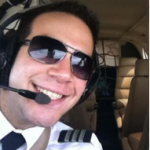
 I’ve officially been in California for over a week now; I arrived last Thursday evening safely.
I’ve officially been in California for over a week now; I arrived last Thursday evening safely.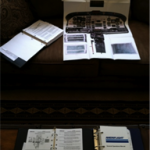 Hazardous Materials (HazMat), GPS training, emergency procedures, company policy/expectations and regulations, to name a few. During the week, the new-hire class got to meet the President, Director of Operations, Chief Pilot, Director of Training, and the Flight Department administration team. Indoc concluded on Friday with a test and receiving our ID badges.
Hazardous Materials (HazMat), GPS training, emergency procedures, company policy/expectations and regulations, to name a few. During the week, the new-hire class got to meet the President, Director of Operations, Chief Pilot, Director of Training, and the Flight Department administration team. Indoc concluded on Friday with a test and receiving our ID badges.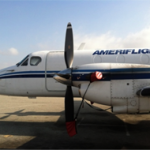 As an intern at Ameriflight, not only do I get paid, but I will also be receiving ground, simulator, and aircraft training to fly the Beechcraft 1900C Airliner as a First Officer (SIC – Second in Command) on daily cargo runs. This is an intense process that will really put my Embry-Riddle education and past flight training to the test. I have already received my training materials (cockpit flow diagram, aircraft manuals, standard operating procedures, etc.) and have begun studying aircraft systems and procedures, as required.
As an intern at Ameriflight, not only do I get paid, but I will also be receiving ground, simulator, and aircraft training to fly the Beechcraft 1900C Airliner as a First Officer (SIC – Second in Command) on daily cargo runs. This is an intense process that will really put my Embry-Riddle education and past flight training to the test. I have already received my training materials (cockpit flow diagram, aircraft manuals, standard operating procedures, etc.) and have begun studying aircraft systems and procedures, as required.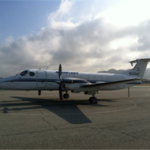 Contrary to public belief, there is a lot of prep-work and studying that goes into being a pilot. As you progress through a career (typically by flying different aircraft), your prior experiences prepare you for the next job, but even the most experienced pilots need to study, as it is a continuous learning process.
Contrary to public belief, there is a lot of prep-work and studying that goes into being a pilot. As you progress through a career (typically by flying different aircraft), your prior experiences prepare you for the next job, but even the most experienced pilots need to study, as it is a continuous learning process.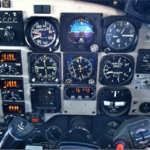 This week was spent in the actual airplane flying the line with a training captain, practicing maneuvers and approaches to nearby airports. This allowed me to get a more realistic feel for the airplane and also put my simulator-learned skills to the test. After flying for three days, I was signed off to take my checkride along with a company check-airmen. I took my SIC-First Officer checkride the next day with one of our Beech 1900 check-airmen and passed. Upon completing the flight, I was presented with company wings and first officer epaulets (sometimes know as shoulder bars/strips). Receiving this was such a rewarding feeling, knowing all those hours of study and years of training paid off.
This week was spent in the actual airplane flying the line with a training captain, practicing maneuvers and approaches to nearby airports. This allowed me to get a more realistic feel for the airplane and also put my simulator-learned skills to the test. After flying for three days, I was signed off to take my checkride along with a company check-airmen. I took my SIC-First Officer checkride the next day with one of our Beech 1900 check-airmen and passed. Upon completing the flight, I was presented with company wings and first officer epaulets (sometimes know as shoulder bars/strips). Receiving this was such a rewarding feeling, knowing all those hours of study and years of training paid off.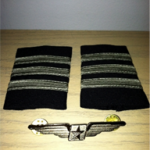 Now that I’m certified to fly the line as a First Officer on the Beech 1900, I have the ability to fly cargo runs anywhere our Beech 1900s fly in the country, but primarily I do in the LA area. Freight-forwarding is a major part of Ameriflight’s business. How UPS and FedEx load their cargo freighters (such as Boeing 767s and Airbus A300s) is via feeder service from smaller cities. Much like how people connect at hubs when flying from one city to another, boxes have to connect as well.
Now that I’m certified to fly the line as a First Officer on the Beech 1900, I have the ability to fly cargo runs anywhere our Beech 1900s fly in the country, but primarily I do in the LA area. Freight-forwarding is a major part of Ameriflight’s business. How UPS and FedEx load their cargo freighters (such as Boeing 767s and Airbus A300s) is via feeder service from smaller cities. Much like how people connect at hubs when flying from one city to another, boxes have to connect as well.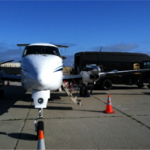
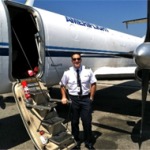
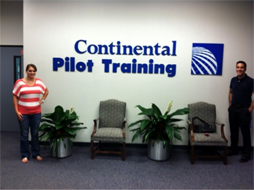 Hello to all my readers out there on the World Wide Web. You might have seen my journals from freshman year or last summer as a Flight Operations Intern at Continental Airlines (now known as United Airlines). Well this summer I will be writing to you about my experiences as Flight Department Intern at Ameriflight, LLC.
Hello to all my readers out there on the World Wide Web. You might have seen my journals from freshman year or last summer as a Flight Operations Intern at Continental Airlines (now known as United Airlines). Well this summer I will be writing to you about my experiences as Flight Department Intern at Ameriflight, LLC. I’m currently on the road to California to begin my summer internship in Burbank (KBUR). I’m making the trip across the country with my Dad, who took the week off of work to share the driving workload with me. We’ve left behind the following states already: Florida, Alabama, Mississippi, Louisiana, Texas, New Mexico, and part of Arizona.
I’m currently on the road to California to begin my summer internship in Burbank (KBUR). I’m making the trip across the country with my Dad, who took the week off of work to share the driving workload with me. We’ve left behind the following states already: Florida, Alabama, Mississippi, Louisiana, Texas, New Mexico, and part of Arizona. Pilot Training Center at Houston-George Bush Intercontinental Airport (KIAH). Night three was spent in Fort Stockton, Texas (with a slight detour in San Antonio to see the Alamo), as it is a massive state to try to drive through in one day. Night four was spent in Tucson, Arizona where we enjoyed slow cooked barbeque and the grand desert landscape. Leaving Tucson, there was a nearby aircraft bone-yard I got to see from the highway, which was pretty cool. We are almost to the California state boarder and will arrive in Los Angeles this evening.
Pilot Training Center at Houston-George Bush Intercontinental Airport (KIAH). Night three was spent in Fort Stockton, Texas (with a slight detour in San Antonio to see the Alamo), as it is a massive state to try to drive through in one day. Night four was spent in Tucson, Arizona where we enjoyed slow cooked barbeque and the grand desert landscape. Leaving Tucson, there was a nearby aircraft bone-yard I got to see from the highway, which was pretty cool. We are almost to the California state boarder and will arrive in Los Angeles this evening.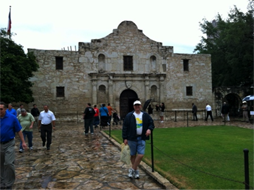

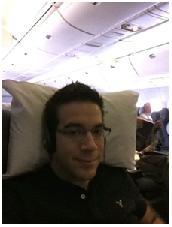 Right now, it’s been two weeks since my last day working at Continental Airlines. The company extends travel privileges for the flight ops interns for 30 days, which is quite nice!
Right now, it’s been two weeks since my last day working at Continental Airlines. The company extends travel privileges for the flight ops interns for 30 days, which is quite nice! 767-400ER and got to sit in BusinessFirst both times!
767-400ER and got to sit in BusinessFirst both times!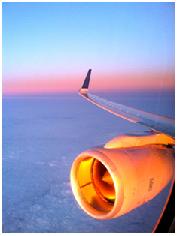 I’m in the process of moving yet again, just like many of us going away to school. I’m now living off-campus and find it to be everything I thought it would be! Moving in and furnishing an apartment has taken a lot of time and money, but I know it will pay off soon. It’s all coming together one piece at a time.
I’m in the process of moving yet again, just like many of us going away to school. I’m now living off-campus and find it to be everything I thought it would be! Moving in and furnishing an apartment has taken a lot of time and money, but I know it will pay off soon. It’s all coming together one piece at a time.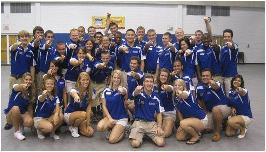 full-time and in addition travelled on the weekends. Meaning I left myself with very little down/spare time. I’ve learned many important lessons this summer on time management. When I say that, I’m not talking about being tardy, but about workload management and setting priorities.
full-time and in addition travelled on the weekends. Meaning I left myself with very little down/spare time. I’ve learned many important lessons this summer on time management. When I say that, I’m not talking about being tardy, but about workload management and setting priorities.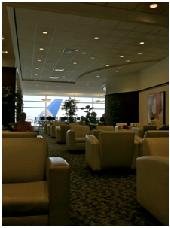 I’m very appreciative to have been offered such an opportunity and writing about it to the world makes it even sweeter! I had such a great time and left with so much knowledge! I truly feel that United/Continental is an excellent company to work for, so much that I hope to one-day work for them again.
I’m very appreciative to have been offered such an opportunity and writing about it to the world makes it even sweeter! I had such a great time and left with so much knowledge! I truly feel that United/Continental is an excellent company to work for, so much that I hope to one-day work for them again.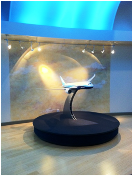 I recently visited the Boeing Everett Factory in Everett, Washington on behalf of Continental Airlines. It was so amazing to see the new aircraft being built and the showroom facility. There are so many options available to airlines and new technologies being released on the new Boeing 787-8 Dreamliner. It is, by far, changing the future of flight as we know it! I left New York early in the morning and arrived by mid-morning in Seattle. I later returned home on the red-eye flight, luckily I got the last seat out! This tour was different from the public tour in that it was a customer factory tour, so we got to see some of the ‘behind the scenes’ work.
I recently visited the Boeing Everett Factory in Everett, Washington on behalf of Continental Airlines. It was so amazing to see the new aircraft being built and the showroom facility. There are so many options available to airlines and new technologies being released on the new Boeing 787-8 Dreamliner. It is, by far, changing the future of flight as we know it! I left New York early in the morning and arrived by mid-morning in Seattle. I later returned home on the red-eye flight, luckily I got the last seat out! This tour was different from the public tour in that it was a customer factory tour, so we got to see some of the ‘behind the scenes’ work.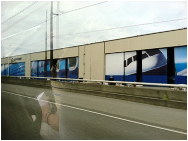 I was also able to hop on a Continental Connection flight to Toronto, Canada with my dad this weekend. Canada was a lot of fun! I liked how the culture seemed to be a mix of both North American and European. It was a very short flight and I flew there on the Bombardier Dash-8 (Q400). I even got to see Niagara Falls!
I was also able to hop on a Continental Connection flight to Toronto, Canada with my dad this weekend. Canada was a lot of fun! I liked how the culture seemed to be a mix of both North American and European. It was a very short flight and I flew there on the Bombardier Dash-8 (Q400). I even got to see Niagara Falls!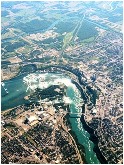 I’m now enroute to Denver, CO to begin work at the United Airlines Flight Training Center. I will be out there for two weeks working on a special assignment. This is a very neat opportunity and it is also the first time that Continental interns will work with our sister operation.
I’m now enroute to Denver, CO to begin work at the United Airlines Flight Training Center. I will be out there for two weeks working on a special assignment. This is a very neat opportunity and it is also the first time that Continental interns will work with our sister operation.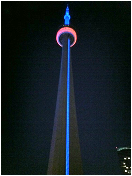 Everyone I speak to says that Colorado is most beautiful during the summer and I’ve heard nothing but good things about the culture. I have good feeling that I’m going to enjoy my time there.
Everyone I speak to says that Colorado is most beautiful during the summer and I’ve heard nothing but good things about the culture. I have good feeling that I’m going to enjoy my time there.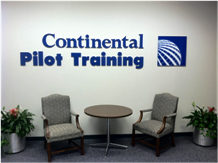 I left off saying that I just began intern pilot training at Continental Airlines. Now three weeks later, I’m writing to say that I’ve successfully completed that course. I learned a lot during training and enjoyed it as well. It was certainly an experience that I will never forget.
I left off saying that I just began intern pilot training at Continental Airlines. Now three weeks later, I’m writing to say that I’ve successfully completed that course. I learned a lot during training and enjoyed it as well. It was certainly an experience that I will never forget.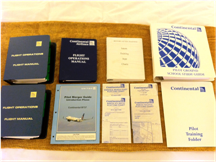 When learning to fly small aircraft, students are taught to fly the airplane by themselves, as many require only one pilot. However, many large transport aircraft require more than one crewmember, in most cases only two. There are many factors as to why more than one crewmember is necessary, but mainly it is to assist with the high workload. There is much more happening in the cockpit of Boeing 737 than in a Cessna 172, as you can imagine.
When learning to fly small aircraft, students are taught to fly the airplane by themselves, as many require only one pilot. However, many large transport aircraft require more than one crewmember, in most cases only two. There are many factors as to why more than one crewmember is necessary, but mainly it is to assist with the high workload. There is much more happening in the cockpit of Boeing 737 than in a Cessna 172, as you can imagine.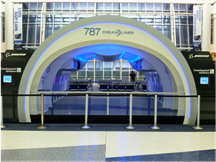 Duties such as Pilot Flying (PF) and Pilot Monitoring (PM) were discussed and practiced during each activity. Many times the monitoring pilot will contact Air Traffic Control (ATC) and retract the gear and flaps on command by the pilot flying, regardless of who is the Captain or First Officer. However, when the monitoring pilot is diagnosing a problem, troubleshooting, or briefing an approach, the pilot flying will take on the extra duties such as ATC.
Duties such as Pilot Flying (PF) and Pilot Monitoring (PM) were discussed and practiced during each activity. Many times the monitoring pilot will contact Air Traffic Control (ATC) and retract the gear and flaps on command by the pilot flying, regardless of who is the Captain or First Officer. However, when the monitoring pilot is diagnosing a problem, troubleshooting, or briefing an approach, the pilot flying will take on the extra duties such as ATC.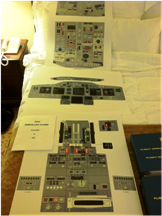 Many of our procedures, or how we operate, come from accident/incident studies and statistics. So before we learn an action, such as how to dialing in the altimeter setting, we study accidents and incidents where pilots failed to properly set it. By learning from the mistakes of those aviators before us, we can better prepare ourselves to not make those same ones. This proves that studying history is very important, even if its aviation history!
Many of our procedures, or how we operate, come from accident/incident studies and statistics. So before we learn an action, such as how to dialing in the altimeter setting, we study accidents and incidents where pilots failed to properly set it. By learning from the mistakes of those aviators before us, we can better prepare ourselves to not make those same ones. This proves that studying history is very important, even if its aviation history!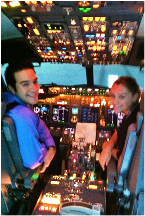 of our flying, for the most part, took place in the right seat, which I didn’t think was all too different. Which means in most of our scenarios, the pilot flying (PF) was the First Officer and pilot monitoring (PM) was Captain. According to our instructor, it takes about 30 seconds to get used to flying in either seat; however it could take years to be upgraded from First Officer to Captain.
of our flying, for the most part, took place in the right seat, which I didn’t think was all too different. Which means in most of our scenarios, the pilot flying (PF) was the First Officer and pilot monitoring (PM) was Captain. According to our instructor, it takes about 30 seconds to get used to flying in either seat; however it could take years to be upgraded from First Officer to Captain.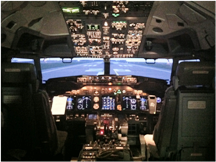 nt and Visual) Approaches & Go Arounds, CFIT Training, as well as normal procedures and various scenario-based training. I felt that my partner and I made good use of our time together in the simulator, as we were able to experience many aspects that were not covered in the syllabus, courtesy of our instructor.
nt and Visual) Approaches & Go Arounds, CFIT Training, as well as normal procedures and various scenario-based training. I felt that my partner and I made good use of our time together in the simulator, as we were able to experience many aspects that were not covered in the syllabus, courtesy of our instructor.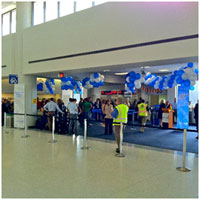
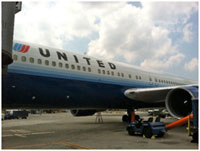
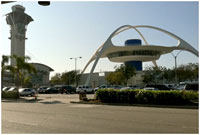
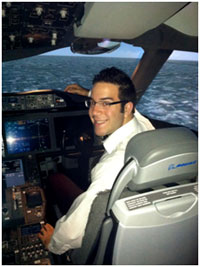
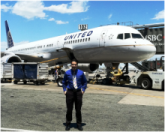 Since I last wrote I’ve visited two foreign cities: Amsterdam, Netherlands and Stockholm, Sweden. I’ve been taking advantage of my travel privileges on the weekends (leave Friday, return Sunday). This usually gives you about 24 hrs in each city, so I try to see and do everything I possibly can during my stay. Along with that, I try to stick to a budget.
Since I last wrote I’ve visited two foreign cities: Amsterdam, Netherlands and Stockholm, Sweden. I’ve been taking advantage of my travel privileges on the weekends (leave Friday, return Sunday). This usually gives you about 24 hrs in each city, so I try to see and do everything I possibly can during my stay. Along with that, I try to stick to a budget. Amsterdam was so much fun and most of the tourists are young people, so I fit right in. The city is situated on a bunch of canals and is very small so everything is within walking distance. I visited the infamous ‘Red Light District’, the flower markets, parks and met many people from all over the world.
Amsterdam was so much fun and most of the tourists are young people, so I fit right in. The city is situated on a bunch of canals and is very small so everything is within walking distance. I visited the infamous ‘Red Light District’, the flower markets, parks and met many people from all over the world.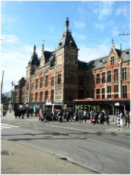 When I travelled to Amsterdam, I went with another intern and we spent our overnight in a hostel. Hostels aren’t as bad as some people make them out to be, plus they’re cheap. It’s generally a dormitory with a bunch of other college kids, and it’s not uncommon for them to be co-ed. Just make sure you keep your belongings in a locker! It also doesn’t hurt to make friends with the people you meet. I’ve actually toured each city I visited with the people I’ve met at hostels.
When I travelled to Amsterdam, I went with another intern and we spent our overnight in a hostel. Hostels aren’t as bad as some people make them out to be, plus they’re cheap. It’s generally a dormitory with a bunch of other college kids, and it’s not uncommon for them to be co-ed. Just make sure you keep your belongings in a locker! It also doesn’t hurt to make friends with the people you meet. I’ve actually toured each city I visited with the people I’ve met at hostels.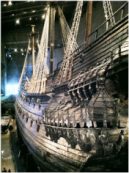 Stockholm was a different story because I visited with my parents. We stayed in a hotel, but everything else remained the same. We toured and walked all around the city, and as expected for Scandinavia, I visited a museum to see a 17th century boat called “The Vasa.” Everything was so clean, nice, and colorful! But that all comes at a price, as Sweden has very high taxes.
Stockholm was a different story because I visited with my parents. We stayed in a hotel, but everything else remained the same. We toured and walked all around the city, and as expected for Scandinavia, I visited a museum to see a 17th century boat called “The Vasa.” Everything was so clean, nice, and colorful! But that all comes at a price, as Sweden has very high taxes. Aside from my travels, this is my last week working in the Chief Pilot Office until July, as I will be in Houston for training starting on Monday June 13th. I will be out of the office for a month, so it’ll be a quite a change of pace. I’ve been studying B737 systems and flows for a few weeks now, and I’m looking forward to applying that knowledge and building on my flying skills. This will be my first experience training at an airline, so I’ll be sure to write about how it goes in the coming weeks. I’m very excited for this opportunity and I’m certainly looking forward to it!
Aside from my travels, this is my last week working in the Chief Pilot Office until July, as I will be in Houston for training starting on Monday June 13th. I will be out of the office for a month, so it’ll be a quite a change of pace. I’ve been studying B737 systems and flows for a few weeks now, and I’m looking forward to applying that knowledge and building on my flying skills. This will be my first experience training at an airline, so I’ll be sure to write about how it goes in the coming weeks. I’m very excited for this opportunity and I’m certainly looking forward to it!